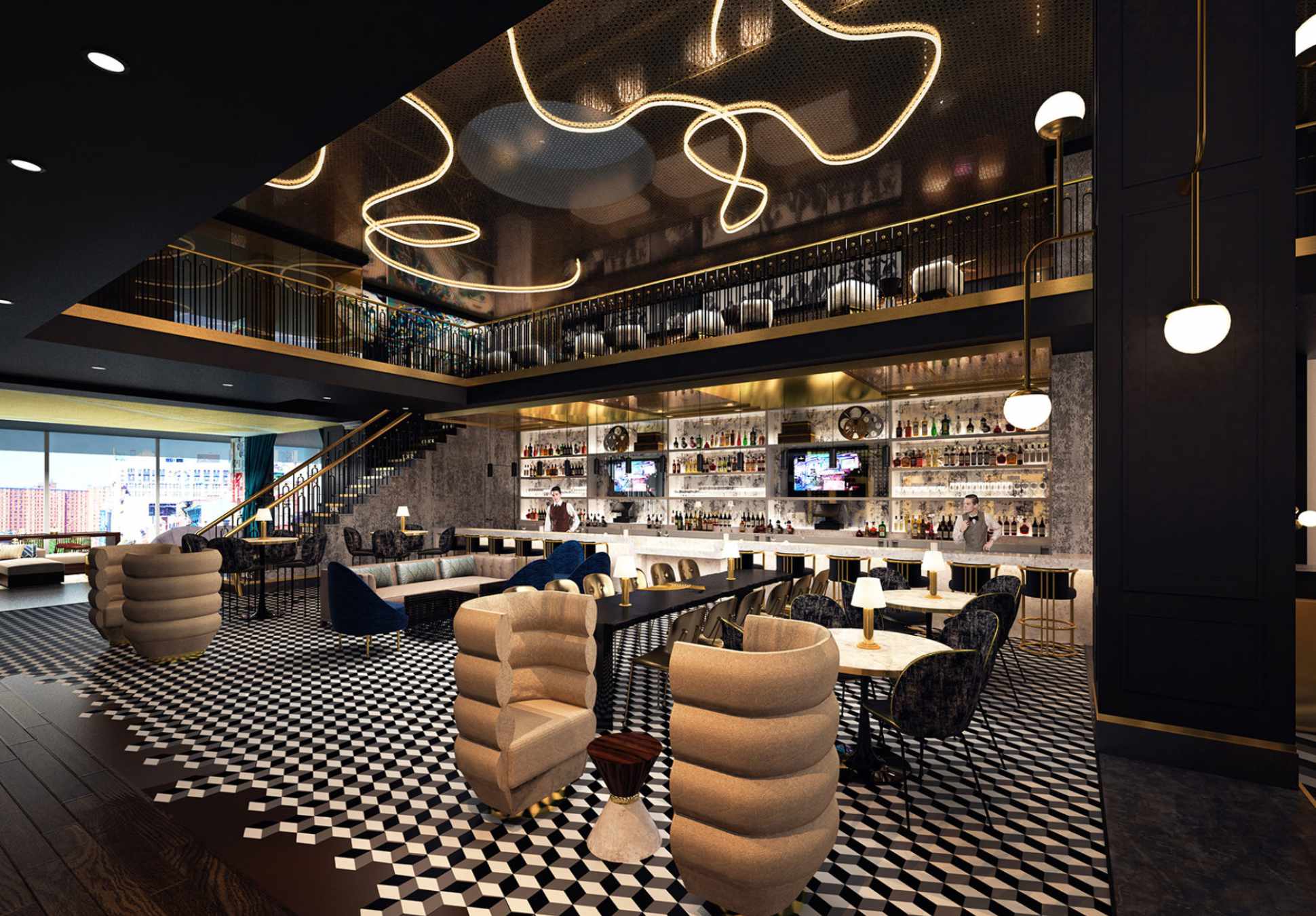If “patience makes the heart grow fonder,” then AJC Design’s heart is overflowing at the news of the opening of the Harlem Renaissance Hotel earlier this month. We led the interior design portion of the project, which began at the start of 2015. If you think 8 ½ years is an extraordinary time between a project kick-off and its completion, you’re right. Most ground-up hotel design projects take between 2-3 years to be actualized.
Hotel History
Unlike many of the other hotels, AJC Design has designed, the Harlem Renaissance hotel, wasn’t just a hotel project. It was also a project aimed to preserve the rich history of Harlem, situated on 125th Street, and one of its dearest cultural landmarks, the Victoria Theater. The Victoria, was built in 1917 and originally showcased Vaudeville shows for many years before it was purchased by Loews and became a movie cinema until its closing in 1994. The Victoria is now home to the corporate headquarters of the Apollo Theater.
When AJC Design got involved in the proposal stage at the end of 2014, we knew it was the ideal project to not only demonstrate its design skills, but to also give back to the Harlem community, in which AJC Design resided. We realized that Harlem lacked entertainment and meeting spaces so this hotel would help revive and celebrate the arts community. AJC was also keen on paying homage to the legendary Harlem Renaissance artists, such as Ella Fitzgerald, Duke Ellington, Billie Holiday, and Langston Hughes, who emerged during Harlem Renaissance.
Project Challenges
Construction and design of the hotel took many twists and turns over the last 8 years. First, there was the constraint of replicating the original 1917 Victoria Theater lobby on the first two floors. This involved significant restoration of the original terrazzo floor and venetian plaster ceiling. While the original marquis of the Victoria was reconstructed, the lobby and theater spaces were either restored or reused. To enter the hotel, guests must go through the theater entrance and take it to the 5th floor. Floors 5-27 are the newly constructed hotel. The second constraint were serious environmental setbacks such as flooding from the Hudson River when construction began; not to mention budget changes and constraints, and of course COVID.
Creativity is in the Details
AJC Design did their research to capture the essence of the history of the Victoria Theater and Harlem Renaissance in the early part of the 20th century. The result is memorable design details features, some outlined below, that you can view online or in-person when you visit:
- Lobby Area: Art-deco furniture with a modern flair. There is a golden neighborhood map of Harlem on the ceiling to inspire guests to place themselves in the moment. Stairs to the mezzanine level contain the names of the famous jazz greats like Ellington, and Holiday. A wall-size picture of Billie Holiday rests behind the paneling to blend into the scene.
- Lobby infrastructure: Lobby columns are covered in wood wainscoting while antique 1920’s replica wallpaper patterns adorn the walls of meeting rooms named after famous dance routines – the Jive, Lindy and Bop. Original soapboxes, used on street corners are interspersed in the lobby to capture the look and feel of how news was spread in Harlem.
- Guest Rooms: Contemporary design with homage to literary great, Langston Hughes. In fact, there are Hughes’ quotes and historical references in each guest room, along with many other hotel amenities.
- Elevators: Graphic cymbals patterns printed on mylar surround the elevator shafts to tie into musical history, while elevator cars feature portraits of the jazz legends. Furthermore, elevator doors are etched in unique patterns that are from dishware used in the 1920’s.
Learnings
While the journey between project start and project completion wasn’t smooth nor timely, it proves that even the best laid plans are subject to unforeseen changes. Although, we weren’t able to anticipate installation challenges, we didn’t beat ourselves up. Ultimately each project depends on a team dynamic of developers, builders, designers and project managers. They must balance what’s feasible, cost-effective and permitted with the design vision. The best part of the design of the 22-floor, 211-room Harlem Renaissance Hotel, is that even though the design was conceived almost a decade ago, we envisioned a design that stood the test of time.
